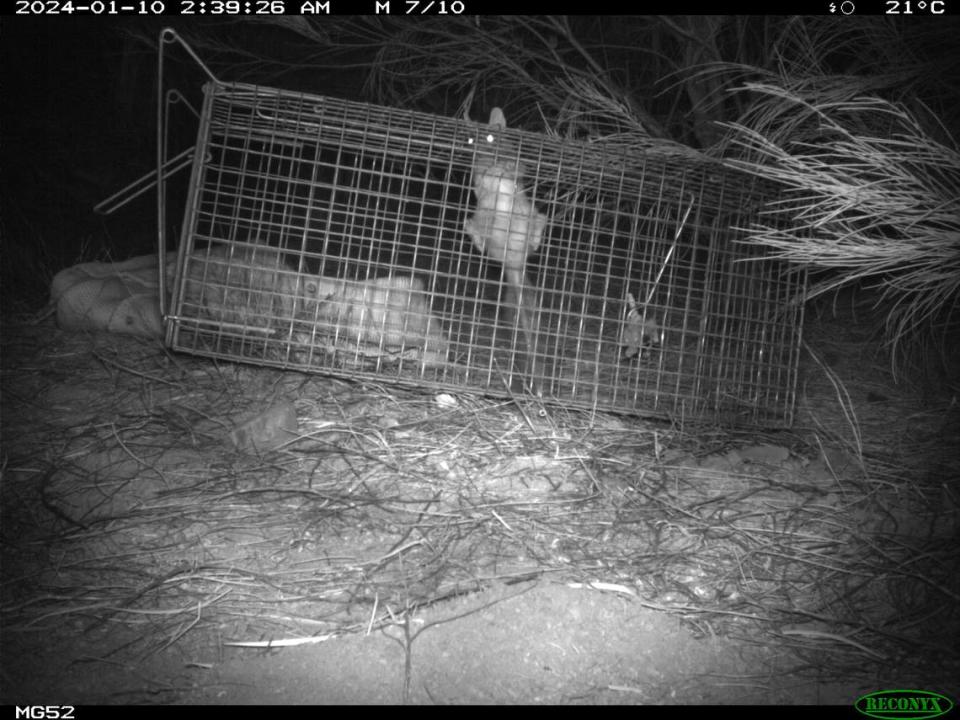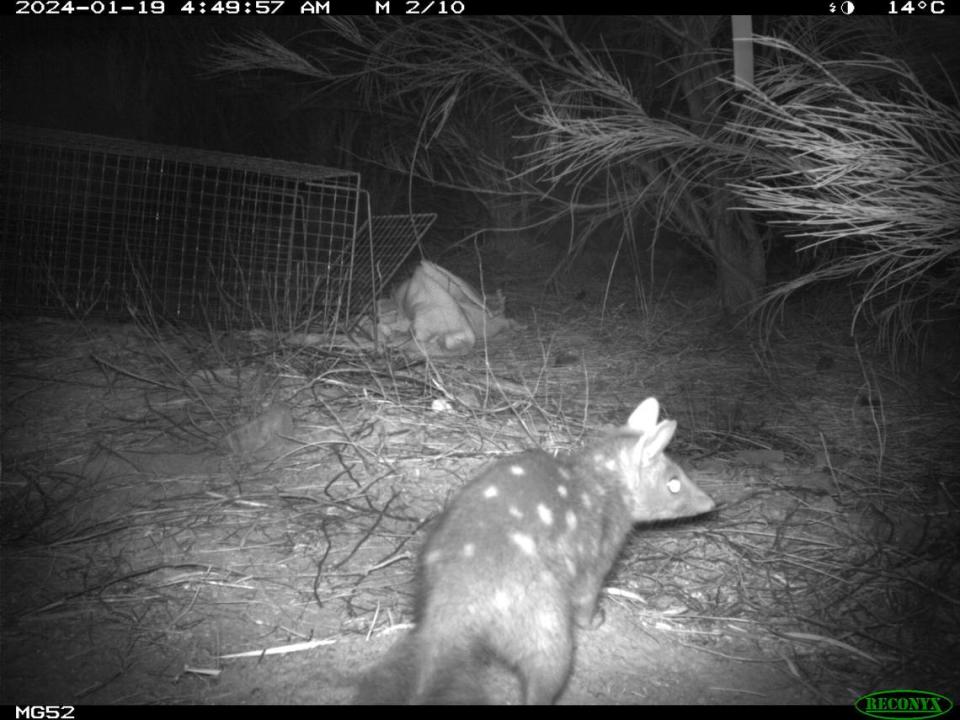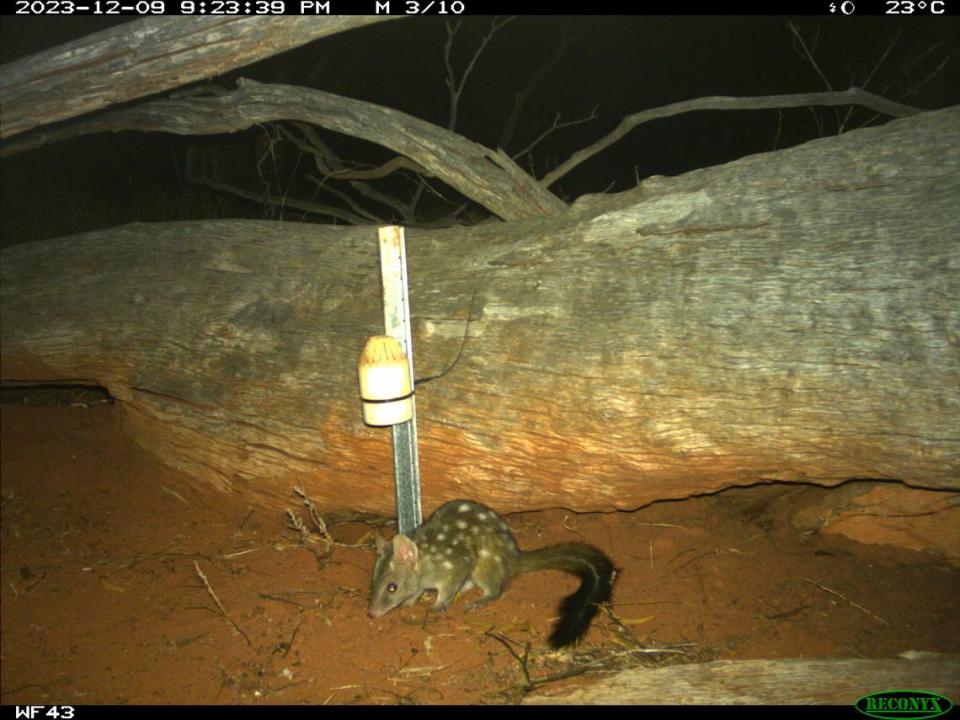‘Mysterious case’ of stolen bait leads to first-in-a-century discovery in Australia
Bait started vanishing from traps at a wildlife sanctuary in Australia, but the traps remained empty. Then ecologists tracked down the culprits — and made a first-in-a-century discovery.
“We had a mysterious case of cat trap tampering whereby the traps were closed, the bait was gone but no culprit inside,” ecologist Erin Barritt said in an April 17 news release from the Australian Wildlife Conservancy.
To figure out what was happening, the team at Mount Gibson Sanctuary set up cameras and started watching.
The cameras revealed several small furry creatures were approaching the traps at night. Photos show these animals climbing the cage or standing near the trap.

Ecologists identified the culprits as four young Western quolls, the conservancy said.
Western quolls are a vulnerable species of carnivorous marsupials native to Australia, according to an article from the conservancy. They can reach “the size of a domestic cat” and have furry bodies with white spots and a brush-like tail.
Western quolls once lived “across nearly 70%” of Australia, but their population has been devastated by cats and foxes, wildlife officials said. The species was locally extinct from the Mount Gibson Sanctuary until being reintroduced last April.
The bait-stealing babies were “the first independent quolls born on the sanctuary in around 100 years,” the conservancy said.

Photos shared by the conservancy in an April 16 Facebook post show the spotted animals.
To confirm the young quolls were wild-born and not just new arrivals, “we compared their unique spot pattern against a reference library of all 45 quolls that were released at Mt Gibson over the last 12 months,” Barritt said.
She described the process as being “a bit like picking out constellations, except the points twist, turn and stretch depending on the quoll’s position.”

There were no matches, confirming the babies were recently born in the sanctuary. Barritt suspects the quolls were born in July and became independent in December.
“This is very exciting for the team,” Barritt said in the release. The first-in-a-century quoll babies were named Tim Tam, Oreo, Monte and Tiny Teddy after popular cookies in Australia, the conservancy said.
Ecologists plan to continue monitoring the quolls in Mount Gibson Sanctuary. The wildlife sanctuary is in Western Australia, a 2,500-mile drive northwest of Sydney.
Farmer protecting chickens captures creature considered locally extinct for 130 years
Monster 14-foot crocodile stalked pets, evaded capture for weeks — until now. See it
Boaters left with ‘jaws gaping’ as two ‘titans of the ocean’ battle, rare video shows


